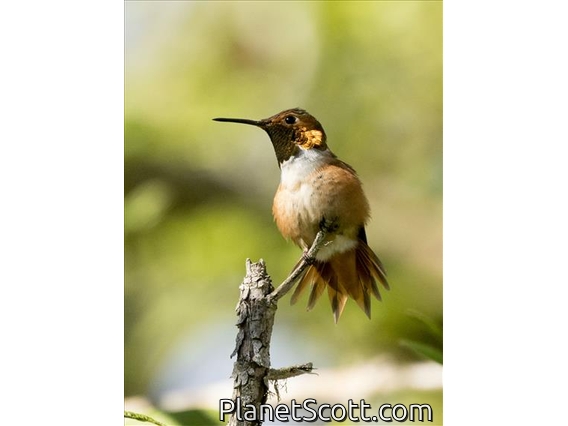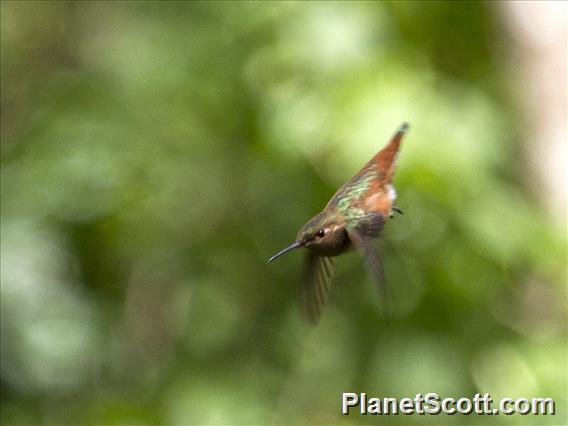Allen's Hummingbird (Selasphorus sasin)

Allen's Hummingbird (Selasphorus sasin) - Male

Allen's Hummingbird (Selasphorus sasin)


×



Allen's Hummingbird (Selasphorus sasin) - Male

Allen's Hummingbird (Selasphorus sasin)
About Allen's Hummingbird (Selasphorus sasin)
- Kingdom: Animals
- Phylum: Chordates
- Class: Birds
- Order: Hummingbirds and Swifts
- Family: Hummingbirds
Allen's hummingbird is a species of hummingbird that breeds in the western United States. It is one of seven species in the genus Selasphorus.
Source: Wikipedia
Trips
Visits
-
2006-06-05
Mount Davidson, United States of America -
2006-06-06
McLaren Park, United States of America -
2006-06-11
Point Reyes National Seashore, United States of America -
2007-03-15
Baker Beach, United States of America -
2007-04-09
Anza-Borrego Desert State Park, United States of America -
2008-03-23
Sutro Heights--Baths / Land's End, United States of America -
2008-03-23
Golden Gate Park - Stow Lake, United States of America -
2009-04-05
East Wash, United States of America -
2012-05-06
Golden Gate Park - Buffalo Paddock, United States of America -
2012-06-13
Mount Davidson, United States of America -
2012-06-14
Mount Davidson, United States of America -
2013-03-17
Lake Merced , United States of America -
2014-02-15
Lake Merced , United States of AmericaTwo males seen staking out territory next to the lake. -
2014-02-16
Golden Gate Park - North Lake, United States of America -
2014-03-22
Baker Beach, United States of America -
2014-05-03
Glen Canyon Park, United States of America -
2014-06-15
Golden Gate Park - North Lake, United States of America -
2014-08-23
MacKerricher SP, United States of America -
-
-
-
-
-
-
2018-08-26
Golden Gate Park - San Francisco Botanical Garden, United States of America -
-
-
-
-
-






